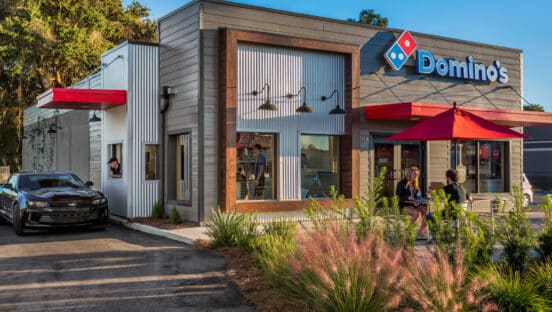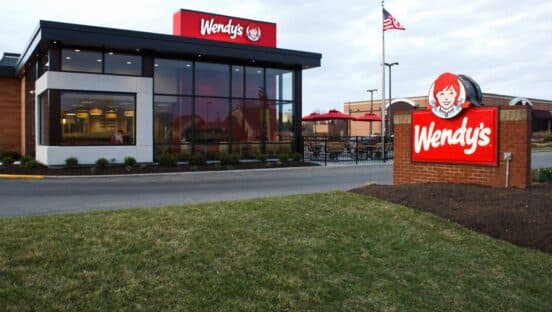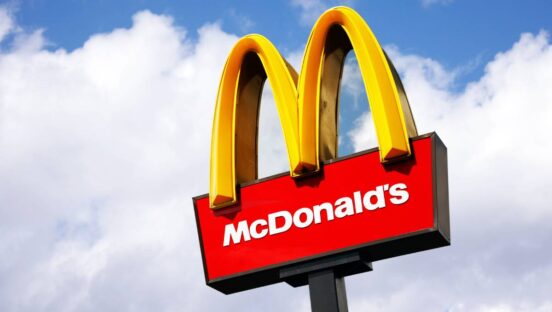A couple of weeks ago, I decided to hop into Doc Brown’s Time Machine and head back to good-old 1955. What I mean by this is that I visited one of New York’s hottest new restaurants, Carbone. Created by chefs Rich Torrisi and Mario Carbone of the widely acclaimed Torrisi Italian Specialties, Carbone is an upscale dining experience that features high-quality interpretations of classic Italian American cuisine.
The boys did not stop with the Chicken Parmigiano and Linguine Vongole. As you stroll into Carbone through a non-descript storefront in Greenwich Village, you are transported into another time. Classic wallpaper, a doo-wop soundtrack, maitre d’s in classic tuxedos, and Caesar salads from a cart are a few of the tools used to craft your experience. This is coming from a guy who grew up eating his grandmother’s meatballs on Sundays and watching “Goodfellas” 1,000 times: Carbone set the perfect tone. Whether or not the food was the taste extravaganza I was promised became marginally important. The tasteful and thoroughly authentic take on classic Italian-American culture created an emotional connection that would be hard to sever.
What Carbone has accomplished is exactly what we are all looking to do as restaurant operators: establish an emotional connection with our customers. These connections create a deep bond that is very difficult to break. But how can you create them? And, more importantly, how can you cultivate them for the benefit of your business?
CLOSER LOOK
Magnolia Bakery
LOCATIONS: 7 U.S., 4 International
WHERE: New York, Los Angeles, Chicago, Dubai, Doha, Kuwait, Lebanon
ESTABLISHED: 1996
OWNERS: Steve & Tyra Abram
SIGNATURE ITEMS: Retro 1950s-style cupcakes, along with cakes, pies, icebox desserts, cookies, and cheesecakes
To build these types of bonds, you need to be more than just a great operator; you need to be a great storyteller. You must take your customers on a journey that stimulates their imagination and allows them to escape the monotony of their everyday life. Doing this well will provide you and your business with tremendous power and trust. And for as long as you have this trust, your food will taste better, your customers will be more loyal, and the word of mouth surrounding your business will spread more quickly and fiercely. The story you choose to tell will be the difference between a brand with growth potential or just another place to quench your thirst and fill your belly.
For an example of this, look no further than consumers’ obsession with biographies of great companies and their founders. There have been a number of these done on Starbucks. Is the way Starbucks makes its coffee so fascinating? Did Howard Schultz start off to make a buck or make a movie of the week? The truth is, marketers told the story of Schultz and Starbucks so well that the creation of an Italian-style coffee bar has been transformed into a modern-day fairytale. They personalized his struggle, espoused his virtues, and sold the dream of a “third place” for everyone with such drama that Starbucks and Schultz have captivated our imagination. Combine the Starbucks story with a beautiful wood interior and the sound of foaming milk, and it makes every cup of coffee taste a little bit better. For better or worse, till death do us part, many of us have been emotionally connected to Starbucks. The same things happened with luminaries of other industries: Steve Jobs, Walt Disney, Michael Jordan.
The product you create or operate must tell your guests a story. From its interior design, logo, and website to the source of its french fries and wood countertops, every part of your product needs to add a layer to your own personal fairytale. The more cohesive the layers, the better the story. Keep telling it, and you will start believing it. But telling a story will only get you halfway to cashing in on an emotional connection. The second step in the process is to match your story to the core values of your target demographic. Without getting too far into psychology, what I mean by this is you need to tell a story that brings your customers back to the positive memories of their childhood. This will allow you to immediately connect to their core and draw on their emotions.
A perfect example of this theory and its powerful effect is the global obsession with cupcakes. Magnolia Bakery, Georgetown Cupcake, Crumbs, and Sprinkles should be writing thank-you letters and checks to Duncan Hines, Betty Crocker, and moms of America. Why? Because every birthday party, school outing, and summer camp that featured the simple indulgence of a cupcake are what have given these cultural phenoms a direct line to our inner child. Close your eyes and remember that vanilla cupcake with chocolate butter cream and rainbow sprinkles that you ate as a child. When you feel warm and fuzzy, you will immediately understand the unmatched value of creating an emotional connection. And that, in the immortal words of Huey Lewis, is “the power of love.”









